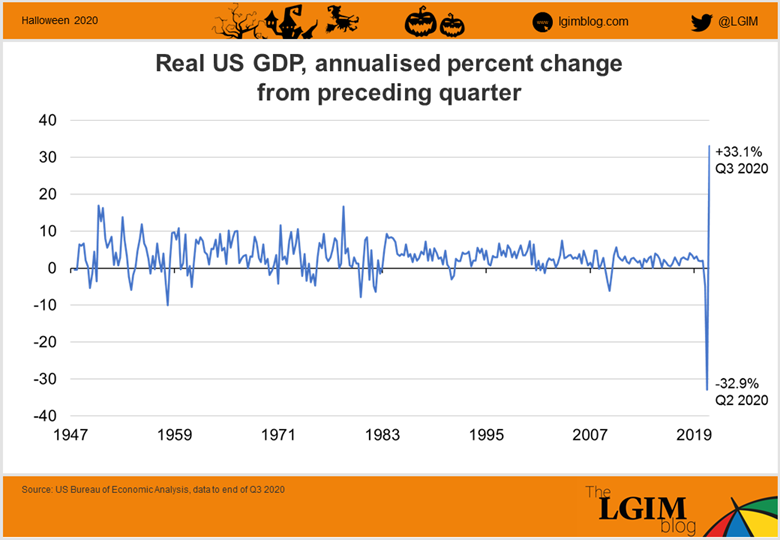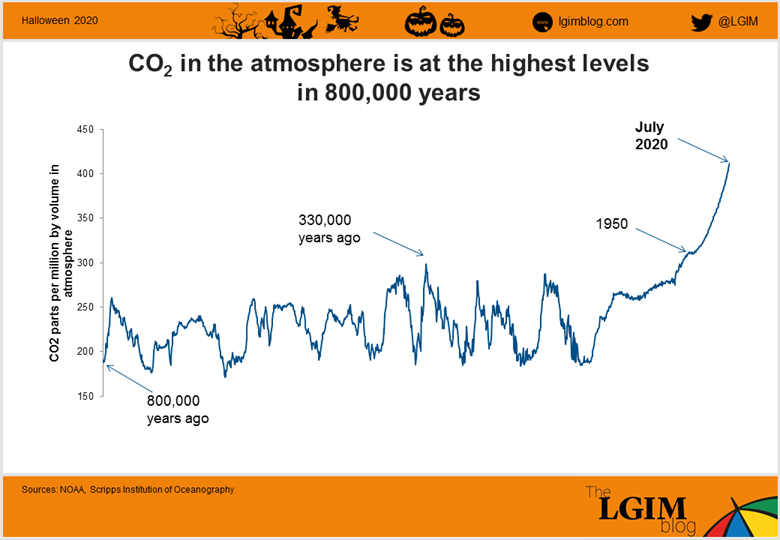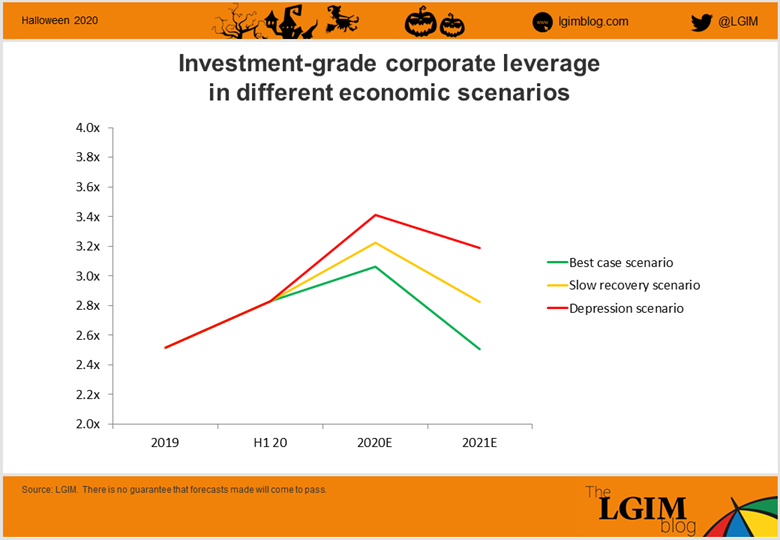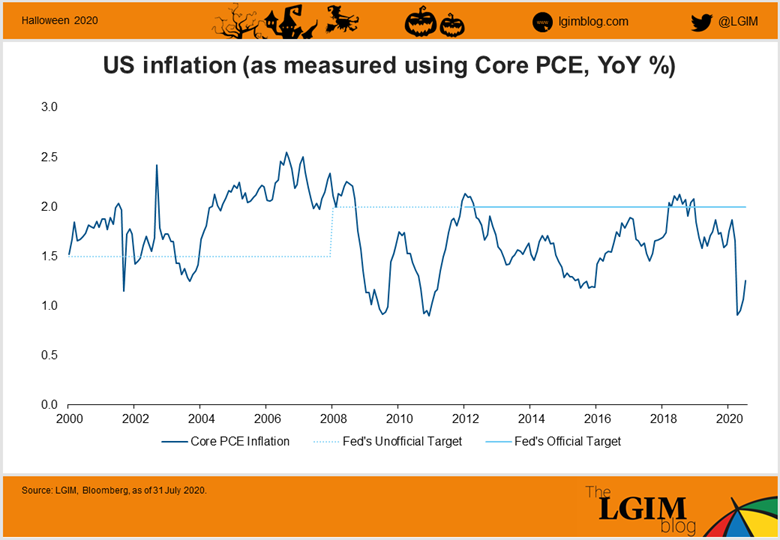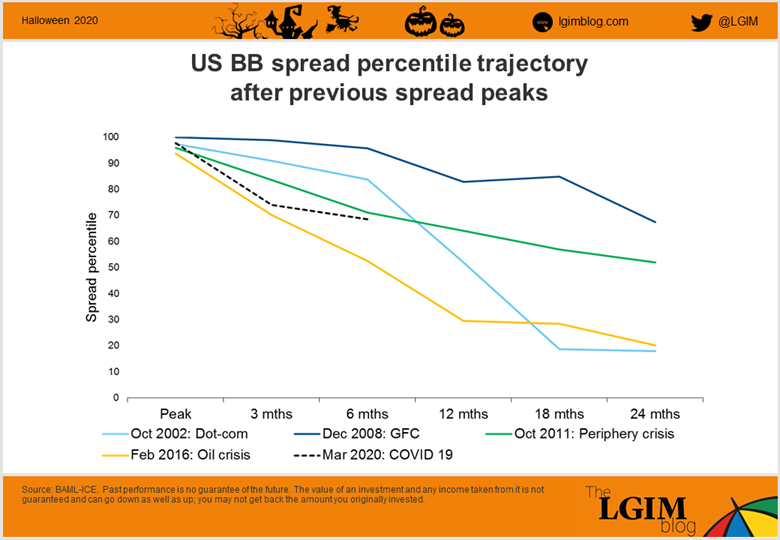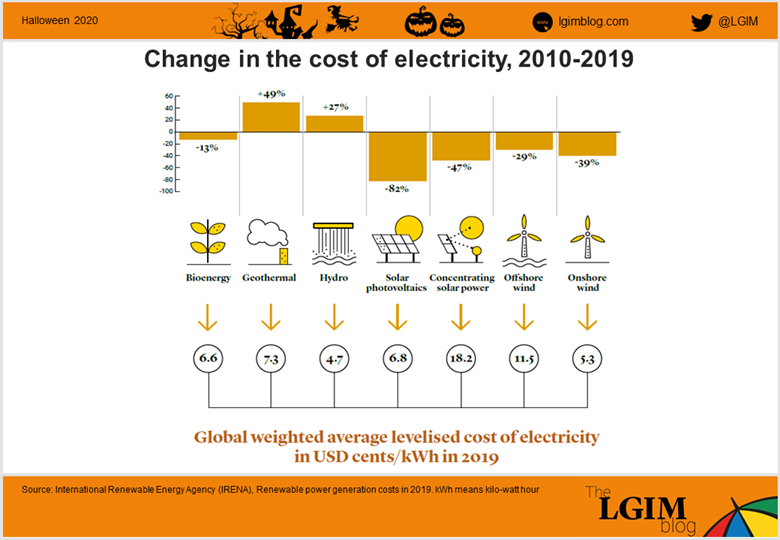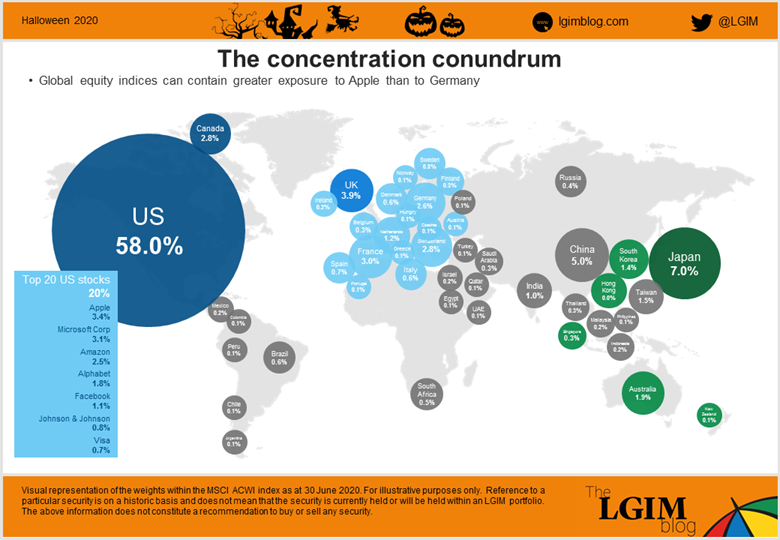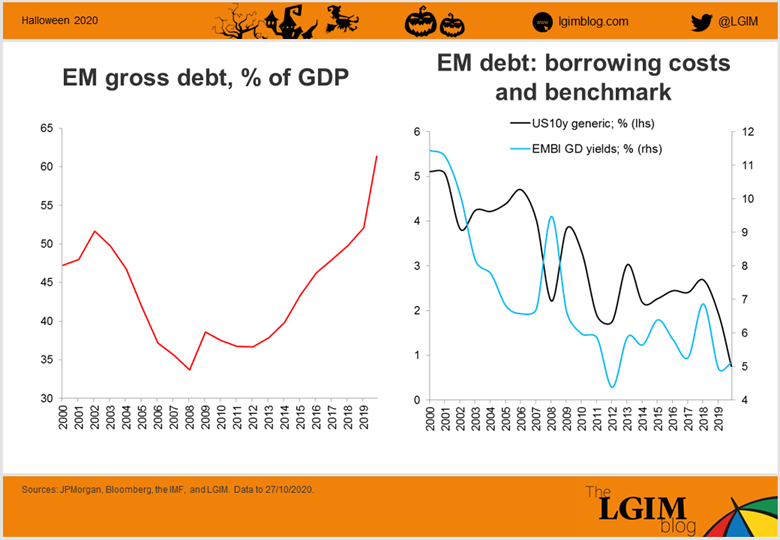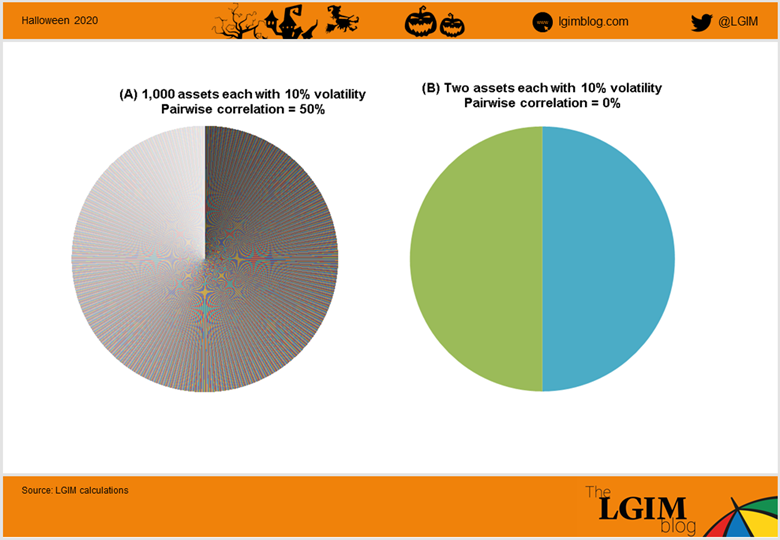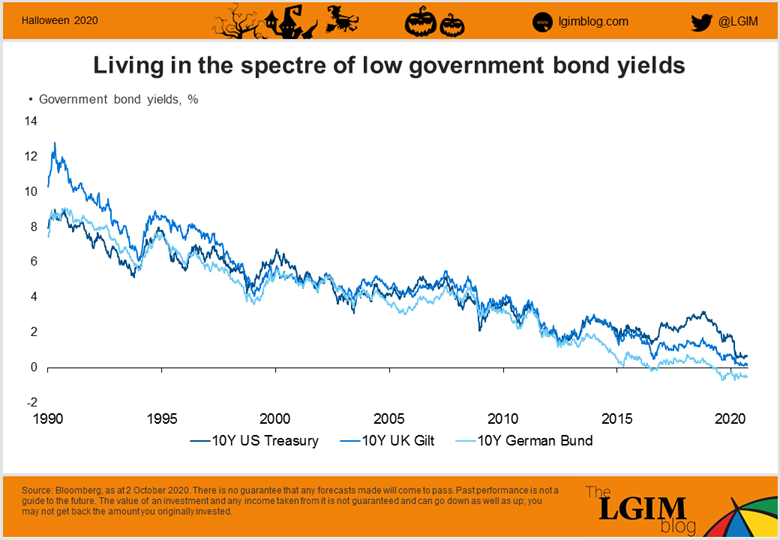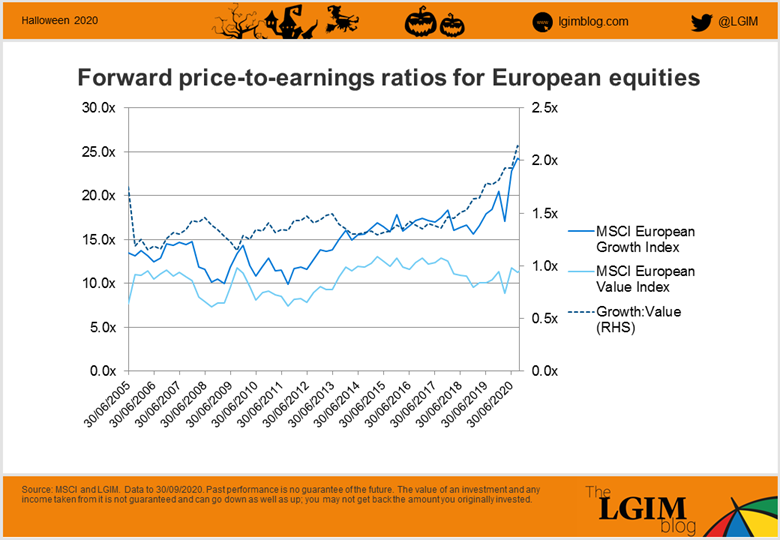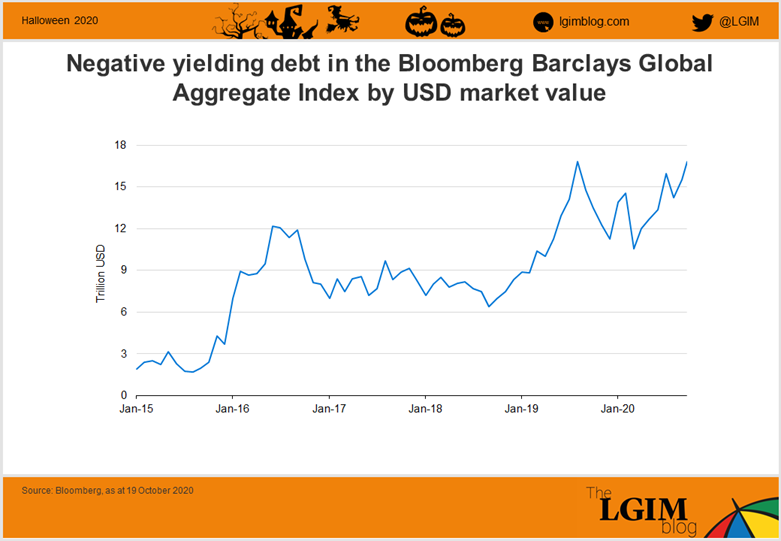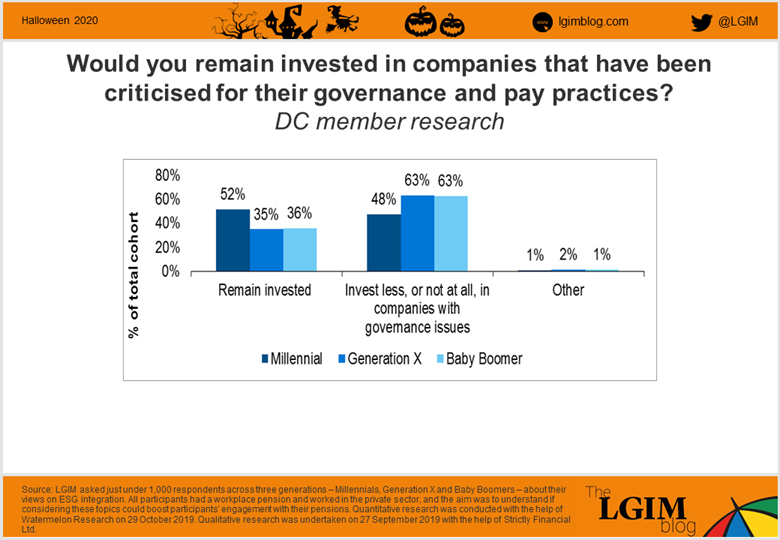Please read the Terms and Conditions below before proceeding to our website.
Alternatively, view the Terms and Conditions in PDF format.
These Terms and Conditions (defined below) set out the terms on which you may make use of our website (the "Site"). For the avoidance of doubt, "use" of the Site includes, without limitation, accessing, browsing, linking to, posting material on or registering to use our Site.
Use of this Site is offered to you on condition of your acceptance, without modification, of the Terms and Conditions (defined below). By using the Site, you confirm that you agree to be bound by these terms and conditions and any additional terms which are set out on the Site including, but not limited to, the Privacy Policy and Cookie Policy as amended by us from time to time (collectively, the "Terms and Conditions").
If you do not accept the Terms and Conditions, then please do not use the Site.
The content of the Site is for information purposes only and does not constitute a sample of units or shares in investment funds.
We may amend the Terms and Conditions, without notice, at any time. Please check this page from time to time to take notice of any changes, as any use of the Site after such amendments have been made shall be treated as signifying your acceptance of the applicable Terms and Conditions at the time you access the Site.
INFORMATION ABOUT US
Throughout the Terms and Conditions, unless expressly stated otherwise, references to "Legal & General", "We" or "Us" shall mean all of the companies mentioned below. The following companies are all authorised and regulated by the Financial Conduct Authority and have their registered office at One Coleman Street, London EC2R 5AA:
- Legal & General Investment Management Limited ("LGIM"), a company incorporated in England & Wales (Registered No. 2091894) and entered on the Financial Services Register number 119272.LGIM Real Assets (Operator) Limited, a company incorporated in England & Wales (Registered Number 05522016) and entered on the Financial Services Register number 447041.
- Legal & General (Unit Trust Managers) Limited, a company incorporated in England & Wales (Registered Number 01009418) and entered on the Financial Services Register number 1119273.
- Legal & General Property Limited, a company incorporated in England and Wales (Registered Number 02091897) and entered on the Financial Services Register number 313282. Please note that while Legal & General Property Limited is regulated by the Financial Conduct Authority, we may conduct certain activities that are unregulated.
The following company is authorised by the Prudential Regulation Authority and regulated by the Financial Conduct Authority and the Prudential Regulation Authority:
- Legal and General Assurance (Pensions Management) Limited ("PMC"), a company incorporated in England & Wales (Registered No. 01006112) and entered on the Financial Services Register number 202202.
Each of these companies is entered on the Financial Services Register which you can verify by visiting the Financial Conduct Authority’s website http://www.fca.org.uk or by contacting the Financial Conduct Authority on 0800 111 6768.
The following company is authorised and regulated by the Central Bank of Ireland:
- LGIM Managers (Europe) Limited, authorised by the Central Bank of Ireland as a UCITS management company (pursuant to European Communities (Undertakings for Collective Investment in Transferable Securities) Regulations, 2011 (S.I. No. 352 of 2011), as amended) and as an alternative investment fund manager with “top up” permissions which enable the firm to carry out certain additional MiFID investment services (pursuant to the European Union (Alternative Investment Fund Managers) Regulations 2013 (S.I. No. 257 of 2013), as amended). Registered in Ireland with the Companies Registration Office (No. 609677). Registered Office: 70 Sir John Rogerson’s Quay, Dublin, 2, Ireland. Regulated by the Central Bank of Ireland (No. C173733).
- LGIM Managers (Europe) Limited operates a branch network in the European Economic Area, which is subject to supervision by the Central Bank of Ireland. In Italy, the branch office of LGIM Managers (Europe) Limited is subject to limited supervision by the Commissione Nazionale per le società e la Borsa (“CONSOB”) and is registered with Banca d’Italia (no. 23978.0) with registered office at Piazza della Repubblica 3, Milano 20121, (Companies’ Register no. MI - 2557936). In Germany, the branch office of LGIM Managers (Europe) Limited is subject to limited supervision by the German Federal Financial Supervisory Authority (“BaFin”). In the Netherlands, the branch office of LGIM Managers (Europe) Limited is subject to limited supervision by the Dutch Authority for the Financial Markets (“AFM“) and it is included in the register held by the AFM and registered with the trade register of the Chamber of Commerce under number 74481231. In Sweden, the branch office of LGIM Managers (Europe) Limited is subject to limited supervision by the Swedish Financial Supervisory Authority (“SFSA”).
Details about the extent of our authorisation and regulation are available from us upon request.
The company can be verified by visiting the Central Bank of Ireland’s website www.centralbank.ie The ultimate holding company of all of the above companies is Legal & General Group plc, a company incorporated in England & Wales (Registered No 01417162).
In the United Kingdom and outside the European Economic Area, this Site is issued by Legal & General Investment Management Limited. In the European Economic Area, this Site is issued by LGIM Managers (Europe) Limited.
INTENDED AUDIENCE AND USE OF INFORMATION
This Site is not intended for use by all persons in all geographic locations.
If you are a retail client who accesses this Site via your advisor, then we are not providing you with financial services under these Terms and Conditions. If you need any more information on the financial services provided to you, please contact your advisor. You will access this Site only for reasons agreed with your advisor and use the Site in an appropriate way, without misusing or abusing any of the content available.
You are not authorised to copy, distribute or otherwise make use of any logo, trademark, copyright material or other intellectual property of Legal & General which appears on the Site, except as expressly permitted in the Terms and Conditions.
The contents of this Site are provided for general information only and do not constitute advice of any kind (including investment, tax or legal) on which you should rely, or a recommendation to buy or sell any product, service or investment.
These Terms and Conditions are in addition to any terms of business which you may have in place with Legal & General as a direct customer ("Direct Terms") and in the event of any conflict between these Terms and Conditions and any Direct Terms, the terms and conditions of the Direct Terms will prevail.
Please note that any services or products offered by Legal & General will be subject to their own terms and conditions, which you must also read.
The services or products referred to or mentioned on this Site are not available to persons in any jurisdiction where Legal & General is not registered or authorised to engage in any investment business or activity requiring registration or authorisation ("Unauthorised Jurisdiction"). Use of this Site in an Unauthorised Jurisdiction is entirely at your own risk. You should seek advice on your position from your professional advisers.
In particular, this Site and its contents are not directed at any person that is resident in the United States ("US person"), and no offer or invitation is made to any US person to acquire or sell any service, product or security referred to. The provision of any information in this Site does not constitute an offer to US persons to purchase securities.
If you choose to access information on this Site, it is your responsibility to comply with applicable local, national or international laws. Specific variations to these Terms and Conditions apply to each jurisdiction in which Legal & General is authorised or registered to engage in investment business or activities, and these variations can be found below. You must comply with these Terms and Conditions, as varied by the applicable terms below, in relation to the jurisdiction in which you are accessing and using the Site.
PROFESSIONAL INVESTMENT ADVISER AND INVESTMENT RISK
You should consult a professional adviser on your particular financial circumstances before taking, or refraining from taking, any action on the basis of the content of our Site, and you should not rely on the material on this Site. Before making an investment, you should read the appropriate fund prospectus (if applicable) or other terms and conditions as may be appropriate and raise any questions you have on this documentation with your professional adviser.
All investments involve a degree of risk. In particular note:
- Past performance is not a guide to future performance;
- The value of investments and the income from them may go down as well as up and you may not get back the amount invested; and
- Where the investment has exposure to overseas assets, changes in exchange rates between currencies may cause the value of the investment and the level of income to rise and fall.
DISCLAIMER AND LIABILITY
This Site is provided "as is" and “as available” and no representations or warranties are given with respect to this Site or its contents (including without limitation warranties of merchantability and fitness for a particular purpose). In addition, Legal & General does not represent or warrant that the information accessible from or via the Site is accurate, complete or current.
To the fullest extent permitted by law, we exclude all conditions, warranties, representations or other terms which may apply to our Site or any content on it, whether express or implied. Your use of the Site and any of its content or features is at your own risk.
In no event shall Legal & General be responsible for any loss or damage of whatever kind arising out of access to or use of or reliance on any information posted on the Site or any information contained in or accessed through the Site.
Legal & General excludes all liability for any loss or damage and whether in tort (including without limitation negligence), contract or otherwise in connection with:
- your use of, inability to use, or the results of use of the Site;
- your use of or reliance on any content displayed on our Site;
- any websites linked to the Site or the material on such websites; and
- any failure or performance error, omission, interruption, defect, delay in operation or transmission, system failure, unavailability or suspension of the Site, virus, distributed denial-of-service attack or other technologically harmful material that may infect your computer equipment, software, data or other proprietary material on account of your use of the Site or your downloading of any material from the Site or any websites linked to the Site, including, without limitation, loss of profits, loss of income, loss of anticipated savings, loss of revenues, loss of data, loss of goodwill or loss of contracts or business (in each case whether direct or indirect) or for any indirect, economic, consequential or special loss resulting from whatever cause.
Nothing in the Terms and Conditions shall exclude or limit Legal & General's liability for death or personal injury arising from our negligence, for fraud or fraudulent misrepresentation or for any other liability to the extent that such liability cannot be limited and/or excluded by applicable law.
ACCESSING OUR SITE
Our Site is made available free of charge.
We do not guarantee that our Site, or any content on it, will always be available or be uninterrupted. Access to our Site is permitted on a temporary basis. We may suspend, withdraw, discontinue or change all or any part of our Site without notice. We will not be liable to you if for any reason our Site is unavailable at any time or for any period. You are responsible for making all arrangements necessary for you to have access to our Site.
You are also responsible for ensuring that all persons who access our Site through your internet connection are aware of the Terms and Conditions, and that they comply with them.
The hosted service provider is L&G Resources Limited, One Coleman Street, London, EC2R 5AA, telephone number: 0345 678 0020.
CHANGES TO CONTENT OF THE SITE
Legal & General reserves the right in its absolute discretion at any time and without notice to update, remove, amend or vary any of the content which appears on any page of this Site. However, please note that any of the content on our Site may be out of date at any given time, and we are under no obligation to update it.
USING AND SHARING OUR CONTENT
You may:
- view our Site for your personal use on any device that is compatible (including a PC, laptop, smartphone, tablet or other mobile device);
- print off one copy and download extracts of any page(s) from our Site solely for your own personal use;
- draw the attention of others within your organisation to content posted on our Site; and
- share links to specific content or information on our Site by using any sharing tools we make available.
If you wish to share the content of our Site with others, we are happy for you to do the following, provided you comply with the terms set out in this section:
- publish online, the original headline and a link to the article and the first 100 words of an article ("Article Summary");
- forward the original headlines, links and an Article Summary to other individuals.
Other than in accordance with the paragraph above and unless stated on our Site or as indicated by a social sharing icon, you are not permitted to publish, re-transmit, re-distribute or otherwise re-produce any of the content which appears on any page of this Site in any format to anyone else, and you are prohibited from using any such content from the Site in connection with any business or commercial enterprise without obtaining a licence to do so from us or our licensors.
If you wish to re-produce in full any article on the Site, you should contact us directly for authorisation and if granted, we will require you to include an attribution to us when re-producing that article.
Further, you must not modify the paper or digital copies of any materials you have printed off or downloaded in any way, and you must not use any illustrations, photographs, video or audio sequences or any graphics separately from any accompanying text.
If you fail to comply with the paragraph above, we reserve the right to immediately terminate your right to link to our Site and to share the content of our Site, your right to use our Site will cease immediately and you must, at our option, return or destroy any copies of the materials you have made.
LINKING AND POSTING MATERIAL TO OUR SITE
You may link to, or post material to this Site, provided that you do not:
- in any manner to imply that Legal & General is endorsing your investment strategies or policies or any statement made by you; or
- post or transmit material that is libelous, defamatory, obscene, fraudulent, misleading, harmful, that violates the property rights of others (including without limitation infringing use of any third party's intellectual property rights), that violates the privacy of others, or that is in violation of any applicable laws.
If you post material to our Site, we reserve the right to make editorial adjustments before publishing and reserve the right to remove or block any comments or materials posted to the Site which:
- contain profanity or other language likely to cause offence;
- break the law or condone or encourage unlawful activity (including, without limitation, breach of any intellectual property right, defamation and contempt of court);
- are seen to impersonate or falsely claim to be, someone else or represent an organisation;
- repeatedly post the same or similar messages, i.e. spamming;
- are unrelated to the topic the message is posted under;
- include contact details such as phone numbers, postal or email addresses;
- constitute advertising of products and / or services;
- contain links to websites deemed to be unsuitable by us; and/or
- we do not feel are otherwise suitable or appropriate for the Site.
THIRD PARTY LINKS AND RESOURCE IN OUR SITE
The Site may contain links to third party websites and/or the content of third parties ("Third Party Content"). The Third Party Content has been made available solely for your convenience or information. The Third Party Content should not be interpreted as an endorsement by us and we have no control over such Third Party Content. Accordingly, Legal & General makes no representation, warranty or guarantee with respect to the Third Party Content whatsoever (including, as to its accuracy, completeness, suitability or reliability). If you access or use the Third Party Content, you do so entirely at your own risk. To the extent permitted by law, Legal & General excludes any liability arising from any use or reliance by you on the Third Party Content.
SECURITY
We do not guarantee that our Site will be secure or free from bugs, viruses or other malicious code.
You are responsible for configuring your information technology, computer programs and platforms in order to access our Site. You should use your own virus protection software.
You must not:
- misuse our Site by knowingly introducing viruses, trojans, worms, logic bombs or other material which is malicious or technologically harmful;
- attempt to gain unauthorised access to our Site, the server on which our Site is stored or any server, computer or database connected to our Site; or
- attack our Site via a denial-of-service attack or a distributed denial-of service attack.
We will report any breach of this section to the relevant law enforcement authorities and we will co-operate with those authorities by disclosing your identity to them. In the event of such a breach, your right to use our Site will cease immediately.
INTELLECTUAL PROPERTY
Legal & General is the owner or licensee of all copyrights and other intellectual property rights in the Site and all material published on this Site. Those works are protected by copyright laws and other intellectual property laws and treaties around the world. All such rights are reserved to Legal & General and its third party licensors.
All trade marks, service marks, company names or logos are the property of their respective rights-holders and no permission is given by Legal & General in respect of the use by you of any such trademarks, service marks, company names and logos and any such use may constitute an infringement of the rights-holders’ intellectual property rights.
All copyright in any indices values and constituents lists which may be published on the Site, from time to time, may belong to a third party licensor. Where such indices feature on the Site, Legal & General has obtained full license from the relevant licensor to use such copyright in the creation of the contents of the Site.
PRIVACY AND COOKIES
Legal & General is committed to protecting your privacy and keeping your personal information secure. Any personal information you supply to Legal & General via this Site will be treated in accordance with the data protection legislation relevant to your jurisdiction. When you use our Site, you consent to Legal & General collecting and using your personal data in the manner described in our Privacy Policy and Cookie Policy.
INVALIDITY
If any part of our Terms and Conditions is determined to be illegal, invalid or otherwise unenforceable (including, without limitation, any provisions in which we exclude or limit our liability to you), then to the extent of such illegality, invalidity or unenforceability, such terms or conditions shall be deleted and severed from the Terms and Conditions and the enforceability of the remaining Terms and Conditions will survive in full force and effect.
COMMUNICATIONS
Applicable laws may require that certain information or communications be in writing. When using the Site, you accept and agree that communication with Legal & General may be electronic. Legal & General may contact you by email or provide you with information by posting notices on this Site. This does not impact your marketing communication preferences. For any contractual purposes, you agree to electronic means of communication and you acknowledge that all contracts, notices, information and other communications that Legal & General sent to you electronically comply with any legal requirements that such communication be in writing. This provision does not affect your statutory rights.
TELEPHONE RECORDING
As required under and/or in accordance with applicable laws, Legal & General will record all telephone and electronic communications and conversations with you that result or may result in the undertaking of transactions in financial instruments on your behalf. Such records will be kept for a period of five years (or up to seven years upon request from the Financial Conduct Authority and/ or the Central Bank of Ireland (or such successor from time to time) or up to ten years to comply with Swiss law) and will be provided to you upon request.
WAIVER
If Legal & General fails at any time to insist upon strict performance of any of your obligations under the Terms and Conditions, or if Legal & General fails to exercise any of its rights or remedies to which Legal & General is entitled under these Terms and Conditions, this shall not constitute a waiver of such rights or remedies and shall not relieve you from compliance with such obligations.
ENTIRE AGREEMENT
The Terms and Conditions set out the whole agreement between you and Legal & General in relation to the use of the Site. Each party acknowledges that in entering into the Terms and Conditions it does not do so on the basis of or in reliance upon any representations, or promises undertakings, warranties or other statements (whether written or oral) of any nature whatsoever except as may be expressly provided in these Terms and Conditions.
LAW AND JURISDICTION
The Terms and Conditions and any dispute or claim arising out of or in connection with them or their subject matter or formation (including non-contractual disputes or claims) shall be governed by and construed in accordance with the laws in the applicable jurisdiction.
The parties irrevocably agree that the courts in the applicable jurisdiction shall have exclusive jurisdiction to settle any dispute or claim that arises out of or in connection with the Terms and Conditions or their subject matter or formation (including non-contractual disputes or claims).
LANGUAGE
This agreement is drafted in the English language. If this agreement is translated into any other language, the English
language text shall prevail.
CONTACTING US
Questions, comments and requests are welcomed and should be sent to Web Marketing: Email us
In addition to the terms and conditions above, the following terms apply to the jurisdictions listed above them.
ABU DHABI GLOBAL MARKET, UNITED ARAB EMIRATES
The content provided on this Site is for information purposes only. None of the information, opinion, reports, prospectus or other documents contained or made available on this Site shall be construed as an offer, invitation, solicitation, advice or a recommendation for subscription or purchase by Legal & General to acquire or sell any products or securities referred to in this Site.
The "Telephone Recording" paragraph shall be deleted and replaced with "Legal & General will record all telephone and electronic communications and conversations with you that result or may result in the undertaking of transactions in financial instruments on your behalf. Such records will be kept for a period of five years (or such other period as is required by a relevant regulator or applicable law) and will be provided to you upon request."
We are not licensed or authorised to carry on any regulated activity (as defined by the Financial Services Regulatory Authority) in the Abu Dhabi Global Market.
In the "Law and Jurisdiction" section, the words "applicable jurisdiction" shall be deleted and replaced with "Abu Dhabi Global Market."
AUSTRALIA
To the extent that any services or products on this Site are not used for personal, domestic or household use, then, subject to section 64A of the Australian Consumer Law (Schedule 2 of the Competition and Consumer Act 2010 (Cth)) and section 12EC of the Australian Securities and Investment Commission Act 2001 (Cth), which is not otherwise disclaimed or limited under these Terms and Conditions is restricted to:-
- for goods, replacement or repair or the cost of replacement or repair; or
- for services, re-supply or the cost of re-supplying the services.
Under the Privacy Act 1988, an investor or any person may request access to the personal information (if any) we or you hold about them.
In the "Law and Jurisdiction" section, the words "in the applicable jurisdiction" shall be deleted and replaced with "in force in the state of New South Wales, Australia."
AUSTRIA
LGIM Managers (Europe) Limited ("LGIM Europe") is registered with the Austrian Financial Market Authority ("FMA") to provide cross-border investment services in Austria in accordance with article 34 Directive 2014/65/EU (at the time of notification: Article 31 Directive 2004/39/EC).
Registered Address of LGIM Europe is:
70 Sir John Rogerson’s Quay, Dublin 2, Ireland
LGIM Europe is registered with Companies Registration Office under 609677.
Supervisory Authority: Central Bank of Ireland
VAT Identification Number: IE 3544433VH
You can contact LGIM Europe, as follows:
T: + 44 02031243000
The third paragraph ("The contents of this Site...") shall be amended with the following sentence:
Nothing contained herein must be considered as financial analysis nor shall contents of this Site or part of it form the basis of, or be relied on, in connection with any contract or commitment whatsoever.
In the "Disclaimer and Liability" section the last paragraph shall be amended as follows:
Nothing in the Terms and Conditions shall exclude or limit Legal & General's liability for death or personal injury arising from our negligence, for fraud or fraudulent misrepresentation, or blatant gross negligence [krass grobe Fahrlässigkeit] or for any other liability to the extent that such liability cannot be limited and/or excluded by applicable law.
The wording in section "Telephone Recording" shall be read as follows:
"As required under applicable laws, LGIM Europe will record all telephone and electronic communications and conversations with you that result or may result in the execution of transactions in financial instruments on your behalf. LGIM will, however, prior to such recording inform you about it and your data protection rights. Pursuant to art 16 para 7 Directive 2014/65/EU and the applicable laws of England and Wales (implementing Directive 2014/65/EU) such records will be kept for a period of five years (or up to seven years upon request from the Financial Conduct authority (or such successor from time to time)) and will be provided to you upon request.
In the "Law and Jurisdiction" section, the words "in applicable jurisdiction" shall be deleted and replaced with "substantive Austrian law under the exclusion of its conflict of laws rules and the United Nations Convention on Contracts for the International Sale of Goods".
BAHRAIN
This Site and any material or information published thereon has not been approved by the Central Bank of Bahrain which takes no responsibility for its contents. No offer to the public to purchase any financial products or services will be made in the Kingdom of Bahrain and this Site must not be made accessible to or shown to the public generally in Bahrain. The content provided on this Site is for information purposes only. None of the information, opinion, reports, or other documents contained or made available on this Site shall be construed as an offer, invitation, solicitation, advice or a recommendation for subscription or purchase by Legal & General to acquire or sell any products or services.
The "Telephone Recording" paragraph shall be deleted and replaced with "Legal & General will record all telephone and electronic communications and conversations with you that result or may result in the undertaking of transactions in financial instruments on your behalf. Such records will be kept for a period of five years (or such other period as is required by a relevant regulator or applicable law) and will be provided to you upon request."
We are not licensed or authorised to carry on any regulated activity in the Kingdom of Bahrain.
If you do not understand the contents of this Site, you should consult an authorised financial advisor.
In the "Law and Jurisdiction" section, the words "in the applicable jurisdiction" shall be deleted and replaced with "of England and Wales."
BELGIUM
LGIM Managers (Europe) Limited has passported its MiFID top up permissions to Belgium on the basis of free provision of services with the Belgian Financial Services and Markets Authority (the “FSMA”). In particular, it is allowed to provide the following services and activities on a cross border basis in Belgium:
- reception and transmission of orders in relation to one or more financial instruments;
- portfolio management; and
- investment advice.
In the "Law and Jurisdiction" section, the words "in the applicable jurisdiction" shall be deleted and replaced with "of Belgium."
BRUNEI
The Site and its contents are not directed at any person that is resident in Brunei Darussalam (“Brunei Person”), and no offer is made to any Brunei Person to provide or acquire or sell any investment business service, product or security.
The provision of any information in this Site is for general information only and it does not constitute a recommendation, an offer or invitation to offer to Brunei Person to invest or purchase securities.
CHINA
In the "Law and Jurisdiction" section, the words "in the applicable jurisdiction" shall in each case be deleted and
replaced with "of England and Wales."
By providing personal information in the course of your use of the Site, you expressly consent to the transfer of that information overseas in accordance with the terms of the Privacy Policy.
DENMARK
LGIM Managers (Europe) Limited is registered with the Danish Financial Supervisory Authority to provide cross-border investments services in Denmark in accordance with Article 31 in MiFID-Directive and Danish legislation. In the "Law and Jurisdiction" section, the words "in the applicable jurisdiction" shall be deleted and replaced with "of Denmark”.
DUBAI INTERNATIONAL FINANCIAL CENTRE, UNITED ARAB EMIRATES
The content provided on this Site is for information purposes only. None of the information, opinion, reports, or other documents contained or made available on this Site shall be construed as an offer, invitation, solicitation, advice or a recommendation for subscription or purchase by Legal & General to acquire or sell any products or services.
Neither the Dubai International Financial Centre Authority (“DIFCA”) nor the DFSA has any responsibility for reviewing or verifying this Site or information published thereon. Accordingly, neither the DIFCA nor the DFSA has approved this Site or taken any steps to verify the information set out on this Site and has no responsibility for it.The "Telephone Recording" paragraph shall be deleted and replaced with "Legal & General will record all telephone and electronic communications and conversations with you that result or may result in the undertaking of transactions in financial instruments on your behalf. Such records will be kept for a period of five years (or such other period as is required by a relevant regulator or applicable law) and will be provided to you upon request."
We are not licensed or authorised to carry on any regulated activity (as defined by the DFSA) in the Dubai International Financial Centre.
If you do not understand the contents of this Site, you should consult an authorised financial advisor.
In the "Law and Jurisdiction" section, the words "applicable jurisdiction" shall be deleted and replaced with "Dubai International Financial Centre."
EGYPT
This Site is intended for the use of qualified investors only. It is not intended for use by individuals.
The content provided on this Site is for information purposes only. None of the information, opinion, reports, prospectus or other documents contained or made available on this Site shall be construed as an offer, invitation, solicitation, advice or a recommendation for subscription or purchase by Legal & General to acquire or sell any products or securities referred to in this Site.
The "Telephone Recording" paragraph shall be deleted and replaced with "Legal & General will record all telephone and electronic communications and conversations with you that result or may result in the undertaking of transactions in financial instruments on your behalf. Such records will be kept for a period of five years (or such other period as is required by a relevant regulator or applicable law) and will be provided to you upon request."
We are not licensed or authorised to carry on any regulated activity in the Arab Republic of Egypt.
In the "Law and Jurisdiction" section, the words "in the applicable jurisdiction" shall be deleted and replaced with "of England and Wales."
FINLAND
In the "Information About Us" section, the following shall be inserted at the end of such section:
"Of the entities listed above as being authorised and regulated by the Financial Conduct Authority, the Prudential Regulation Authority and/or the Central Bank of Ireland, the following have been notified to the Finnish Financial Supervisory Authority and may provide services into Finland:
- Legal & General Investment Management Limited
Of the entities listed above as being authorised and regulated by the Financial Conduct Authority, the following have not been notified to the Finnish Financial Supervisory Authority and do not offer services into Finland:
- LGIM Managers (Europe) Limited
- Legal and General Assurance (Pensions Management) Limited
In the "Using and Sharing Our Content" section, the following shall be inserted at the end of such section: "This provision does not affect your statutory rights."
In the "Privacy and Cookies" section, the following shall be inserted at the end of such section: "You have the right to withdraw your consent at any time, but you may thereafter not make any further use of the Site."
In the "Law and Jurisdiction" section, the words "in the applicable jurisdiction" shall be deleted and replaced with "of England and Wales".
FRANCE
All copyright in the indices values and constituents lists which may be published on the Site, from time to time, may belong to a third party licensor including, without limitation, FTSE International Limited ("FTSE"). Legal & General has obtained full license from the relevant licensor to use such copyright in the creation of the contents of the Site.
The FTSE indices used within the Site are calculated by FTSE. FTSE does not sponsor, endorse or promote any Legal & General funds.
"FTSE®", "FT-SE®"; and "Footsie®" are trade marks of the London Stock Exchange Plc and The Financial Times Limited and are used by FTSE under license. "All-Share®", "All-World®" and "FTSE4Good®" are the trade marks of FTSE.
In the "Law and Jurisdiction" section, the words "in the applicable jurisdiction" shall be deleted and replaced with "of France".
In the "Information About Us" section the following shall be inserted; LGIM Managers (Europe) Limited ("LGIM Europe") authorised by the Central Bank of Ireland as a UCITS management company (pursuant to European Communities (Undertakings for Collective Investment in Transferable Securities) Regulations, 2011 (S.I. No. 352 of 2011), as amended) and as an alternative investment fund manager with “top up” permissions which enable the firm to carry out certain additional MiFID investment services (pursuant to the European Union (Alternative Investment Fund Managers) Regulations 2013 (S.I. No. 257 of 2013), as amended). Registered in Ireland as a private company limited by shares with the Companies Registration Office (No. 609677). Registered Office: 70 Sir John Rogerson’s Quay, Dublin, 2, Ireland. Regulated by the Central Bank of Ireland (No. C173733) VAT number: IE 3544433VH.
The publication manager is Paul Sweeney, General Counsel. Please direct any queries to: One Coleman Street, London, EC2R 5AA or IB Distribution email.
LGIM Europe is authorized to carry out business in France under a cross-border services passport into France."
In the section "Linking and Posting Material to our Site" the following words shall be inserted; "You shall hold us harmless from any and all claims, injuries, damages, losses or suits including attorney fees, arising out of or in connection with any link and material that you post to this Site."
GERMANY
In the "Information About Us" section, the following wording is inserted;
The Site is operated by LGIM Europe. LGIM Managers (Europe) Limited, authorised by the Central Bank of Ireland as a UCITS management company (pursuant to European Communities (Undertakings for Collective Investment in Transferable Securities) Regulations, 2011 (S.I. No. 352 of 2011), as amended) and as an alternative investment fund manager with “top up” permissions which enable the firm to carry out certain additional MiFID investment services (pursuant to the European Union (Alternative Investment Fund Managers) Regulations 2013 (S.I. No. 257 of 2013), as amended). Registered in Ireland as a private company limited by shares with the Companies Registration Office (No. 609677). Registered Office: 70 Sir John Rogerson’s Quay, Dublin, 2, Ireland. Regulated by the Central Bank of Ireland, N Wall Quay, North Dock, Dublin, D01 F7X3, Ireland (No. C173733). VAT number: IE 3544433VH.
In Germany, the branch office of LGIM Managers (Europe) Limited is at Office 405. Senckenberganlage 10-12, D-60325 Frankfurt am Main, Germany and is subject to limited supervision by the German Federal Financial Supervisory Authority (“BaFin”).
LGIM Europe is represented by: Notices for the attention of: LGIM General Counsel, LGIM Legal, One Coleman Street, London, EC2R 5AA
You can contact LGIM, as follows: Email Web Marketing or + 44 02031243000.
LGIM's monitoring authority is: Central Bank of Ireland
The person responsible for editorial content (sec. 55 (2) rstv) is: LGIM Marketing, One Coleman Street, London, EC2R 5AA, IB Distribution email
In the "Disclaimer and Liability" section the following wording is inserted; "LGIM shall also be liable for any damage in the case of a culpable violation of a material contractual duty or cardinal duty; however, in the event of a violation of a material contractual duty or cardinal duty based on simple negligence, the liability of LGIM shall be limited to the typically foreseeable damage. A “cardinal duty” in the sense of this provision shall be a duty of LGIM whose fulfilment enables the proper performance of the agreement, whose infringement jeopardizes achieving the purpose of the agreement and in whose compliance you may normally trust. Any further-reaching liability on part of LGIM shall be excluded."
In the "Law and Jurisdiction" section, the words "in the applicable jurisdiction" shall be deleted and replaced with "German law".
HONG KONG
References to "Legal & General", "We" or "Us" in the Terms and Conditions shall also include Legal & General Investment Management Asia Limited (“LGIM Asia Ltd”), a Licensed Corporation (CE Number: BBB488) regulated by the Hong Kong Securities and Futures Commission ("SFC") to conduct regulated activities of dealing in securities and asset management in Hong Kong. The registered address of LGIM Asia Ltd is Room 902, 9/F, Chinachem Tower, 34-37 Connaught Road, Central, Hong Kong.
The Site has not been reviewed by the SFC By accepting using the Site, you acknowledge and agree that the Site is provided for your use only and that you will not distribute or otherwise make this material available (except as specified in the Terms and Conditions).
In the "Law and Jurisdiction" section, the words "in the applicable jurisdiction" shall be deleted and replaced with "of the Hong Kong Special Administrative Region of the People's Republic of China."
In our Privacy Policy, under the "Information we collect" section, the following additional terms apply: We intend to use your personal data in direct marketing and may not do so without your consent.
Any promotional emails that we may periodically send about new products, special offers or other information that we think you may find interesting shall relate to the investment products and/or services offered by Legal & General.
Your personal data may be transferred outside of Hong Kong and/or to a Legal & General group company for the reasons set out in this section.
INDONESIA
You represent and warrant that you are entitled to enter into a binding agreement under the laws of the Republic of Indonesia, in particular to the Terms and Conditions, and that you are at least 21 years old or are married and not under guardianship.
Please be informed that Otoritas Jasa Keuangan (the Indonesian Financial Service Authority) or Bank Indonesia does not declare its approval or disapproval of our services and products offered nor do they guarantee the accuracy or adequacy of its services and products, nor do they supervise the use of our products. Therefore your use of our Site will be purely contractual relationship with us as set out in these Terms and Conditions.
This Site or other related documents and information shall not be considered as an offer to our services and products in investment sector; consequently such documents and information shall not be considered an offer.
Some of the information on this Site may contain projections or other forward-looking statements regarding future events or future financial performance of countries, markets or companies. These statements are only predictions and actual events or results may differ materially. You must make your own assessment of the relevance, accuracy and adequacy of the information contained in this Site and to make such independent investigations as you may consider necessary or appropriate for the purpose of such assessment. Any opinion or estimate contained in this Site is made on a general basis and is not to be relied on by you as advice.
The collection and use of personal data under these Terms and Conditions have been in compliance with the collection and use of personal data under the prevailing laws and regulations in Indonesia.
For the use in Indonesia, these Terms and Conditions are drawn up in both the English and the Indonesian languages, both of which versions are binding on you and us. In the event of any inconsistency between the Indonesian language version and the English language version, to the extent permitted by the prevailing laws and regulations, the English language version will prevail.
IRELAND
LGIM Managers (Europe) Limited is authorised by the Central Bank of Ireland as a UCITS management company (pursuant to European Communities (Undertakings for Collective Investment in Transferable Securities) Regulations, 2011 (S.I. No. 352 of 2011), as amended) and as an alternative investment fund manager with “top up” permissions which enable the firm to carry out certain additional MiFID investment services (pursuant to the European Union (Alternative Investment Fund Managers) Regulations 2013 (S.I. No. 257 of 2013), as amended). Registered in Ireland with the Companies Registration Office (No. 609677). Registered Office: 70 Sir John Rogerson’s Quay, Dublin, 2, Ireland. Regulated by the Central Bank of Ireland (No. C173733).
LGIM Managers (Europe) Limited operates a branch network in the European Economic Area, which is subject to supervision by the Central Bank of Ireland. In Italy, the branch office of LGIM Managers (Europe) Limited is subject to limited supervision by the Commissione Nazionale per le società e la Borsa (“CONSOB”) and is registered with Banca d’Italia (no. 23978.0) with registered office at Piazza della Repubblica 3, Milano 20121, (Companies’ Register no. MI - 2557936). In Germany, the branch office of LGIM Managers (Europe) Limited is subject to limited supervision by the German Federal Financial Supervisory Authority (“BaFin”). In the Netherlands, the branch office of LGIM Managers (Europe) Limited is subject to limited supervision by the Dutch Authority for the Financial Markets (“AFM“) and it is included in the register held by the AFM and registered with the trade register of the Chamber of Commerce under number 74481231.
Details about the extent of our authorisation and regulation are available from us upon request. The company can be verified by visiting the Central Bank of Ireland’s website www.centralbank.ie
ITALY
In the section “Information about us” the definition of “Legal & General” shall include: “LGIM Managers (Europe) Limited, a company incorporated in Ireland (Registered no. 609677) and authorised by the Central Bank of Ireland as a management company pursuant to Directive 2009/65/EC and as an alternative investment fund manager pursuant to Directive 2011/61/EU (Central Bank of Ireland Register no. C173733), as well as its Italian branch, which is situated at Piazza della Repubblica 3, Milano 20121 and is enrolled in the Registry of EU Management Companies and Alternative Investment Funds Managers held by the Bank of Italy pursuant to art. 35 of Legislative Decree no. 58/1998 under no. 23978”.
In the Section “Intended Audience and Use of Information”, the first paragraph shall read as follows: “This Site is intended for the use of both professional and retail clients.”
In addition, the term “professional clients” shall be intended to be referred to Italian resident or domiciled legal entities falling within the definition of “clienti professionali o investitori professionali” set out under Legislative Decree no. 58/1998, as implemented by the Consob Issuers Regulation no. 11971/1999 and the Consob Intermediaries Regulation no. 20307/2018. The term “retail clients” shall be intended to be referred to Italian resident falling within the definition of “clienti al dettaglio o investitori al dettaglio” set out under Legislative Decree no. 58/1998 as amended and implemented by Consob Intermediaries Regulation no.20307/2018 and Consob Intermediaries Regulation no. 20307/2018.
In the “Professional Investment Adviser and Investment Risk” section, the first paragraph shall read as follows: “You should consult a professional adviser on your particular financial circumstances before taking, or refraining from taking, any action on the basis of the content of our Site, and you should not rely on the material on this Site. The funds, services and financial instruments mentioned on this Site are not suitable for all investors. Before making an investment, you should read the appropriate fund prospectus (if applicable) and any other offering documents (e.g. fact sheets, KIID, periodical financial reports, management rules or articles association, annual and half-yearly reports etc.) or other terms and conditions as may be appropriate and raise any questions you have on this documentation with your professional adviser. The content of this document does not constitute an offer or a solicitation of an offer for the subscription of any funds.”
In “Disclaimer and Liability” the following paragraph is added: “The information, opinions, data, and documents contained or described in this Site are solely for information purposes and should not be understood as a substitute of the offering document of the fund or the document relating to the services. Therefore, the information provided on this Site does not constitute a legal, tax or financial opinion, a public offer, a personalized recommendation, or an invitation to purchase or sell financial instruments or to carry out a transaction or undertake a legal commitment. Some of the information and documents available on this Site may be classified as “marketing communication” pursuant to Regulation (EU) 2019/1156.”
The “Law and Jurisdiction” section shall read as follows: “The Terms and Conditions and any dispute or claim arising out of or in connection with them or their subject matter or formation (including non-contractual disputes or claims) shall be governed by and construed in accordance with the laws of Italy”.
The parties irrevocably agree that the courts in Italy shall have exclusive jurisdiction to settle any dispute or claim that arises out of or in connection with the Terms and Conditions or their subject matter or formation (including non-contractual disputes or claims).
JAPAN
The Site and its contents are not directed at any person that is resident in Japan ("Japanese person"), and no offer or invitation is made to any Japanese person to acquire or sell any service, product or security referred to. The provision of any information in this Site does not constitute an offer to Japanese persons to purchase securities.
In the "Intellectual Property" section the following shall be inserted; "If you post material to the Site, we are deemed to be authorised to use such material on the Site."
In the "Law and Jurisdiction" section, the words "in the applicable jurisdiction" shall be deleted and replaced with "of England and Wales."
JORDAN
The content provided on this Site is for information purposes only. None of the information, opinion, reports, prospectus or other documents contained or made available on this Site shall be construed as an offer, invitation, solicitation, advice or a recommendation for subscription or purchase by Legal & General to acquire or sell any products or securities referred to in this Site.
The "Telephone Recording" paragraph shall be deleted and replaced with "Legal & General will record all telephone and electronic communications and conversations with you that result or may result in the undertaking of transactions in financial instruments on your behalf. Such records will be kept for a period of five years (or such other period as is required by a relevant regulator or applicable law) and will be provided to you upon request."
We are not licensed or authorised to carry on any regulated activity in the Hashemite Kingdom of Jordan.
In the "Law and Jurisdiction" section, the words "in the applicable jurisdiction" shall be deleted and replaced with "of England and Wales."
KINGDOM OF SAUDI ARABIA
This Site is intended for use only by such persons as are permitted under the Investment Fund Regulations issued by the Saudi Capital Market Authority (“CMA”). It is not intended for use by individuals.
The CMA does not make any representation as to the accuracy or completeness of this Site, and expressly disclaims any liability whatsoever for any loss arising from, or incurred in reliance upon, any part of this Site. Users of the Site should conduct their own due diligence on the accuracy of the information contained on the Site. If you do not understand the contents of this Site you should consult an authorised financial adviser.
Interests in investment funds may only be offered and sold in the Kingdom of Saudi Arabia in accordance with Article 94 of the Investment Funds Regulations issued on December 24, 2006 (the “Regulations”). Article 94(a) of the Regulations states that, if investment fund units are offered to sophisticated investors, as specified in article 74(b) of the regulations, or the minimum amount payable per offeree is not less than Saudi Riyals 1 million or an equivalent amount in another currency, such offer of investment fund units shall be deemed a private placement for the purposes of the Regulations. Investors are informed that article 101 of the Regulations places restrictions on secondary market activity with respect to such investment fund units.
By accessing the Site, the user acknowledges and agrees that this Site has not been approved by the Capital Market Authority or any other authority in the Kingdom of Saudi Arabia, nor has Legal & General or our affiliates received authorisation from, or been licensed by, the Capital Market Authority or any other authority in the Kingdom of Saudi Arabia.
The content provided on this Site is for information purposes only. None of the information, opinion, reports, or other documents contained or made available on this Site shall be construed as an offer, invitation, solicitation, advice or a recommendation for subscription or purchase by Legal & General to acquire or sell any products or services.
The "Telephone Recording" paragraph shall be deleted and replaced with "Legal & General will record all telephone and electronic communications and conversations with you that result or may result in the undertaking of transactions in financial instruments on your behalf. Such records will be kept for a period of five years (or such other period as is required by a relevant regulator or applicable law) and will be provided to you upon request."
In the "Law and Jurisdiction" section, the words "in the applicable jurisdiction" shall be deleted and replaced with "of England and Wales."
KUWAIT
This Site should not be made available to the general public in Kuwait. It is not intended for use by individuals.
We have not licensed any of our products or services for offering in Kuwait by the Kuwait Capital Markets Authority or any other relevant Kuwaiti government agency. The offering of interests in investment funds in Kuwait on the basis of a private placement or public offering is, therefore, restricted in accordance with Decree Law No. 31 of 1990 and the implementing regulations thereto (as amended) and Law No. 7 of 2010 and the bylaws thereto (as amended).
No private or public offering of financial products or services is being made in Kuwait, and no agreement relating to the sale of financial products or services will be concluded in Kuwait. No marketing or solicitation or inducement activities are being used to offer or market financial products or financial services in Kuwait.
The content provided on this Site is for information purposes only. None of the information, opinion, reports, or other documents contained or made available on this Site shall be construed as an offer, invitation, solicitation, advice or a recommendation for subscription or purchase by Legal & General to acquire or sell any products or services.
The "Telephone Recording" paragraph shall be deleted and replaced with "Legal & General will record all telephone and electronic communications and conversations with you that result or may result in the undertaking of transactions in financial instruments on your behalf. Such records will be kept for a period of five years (or such other period as is required by a relevant regulator or applicable law) and will be provided to you upon request."
We are not licensed or authorised to carry on any regulated activity in the State of Kuwait.
If you do not understand the contents of this Site, you should consult an authorised financial advisor.
In the "Law and Jurisdiction" section, the words "in the applicable jurisdiction" shall be deleted and replaced with "of England and Wales."
LEBANON
The content provided on this Site is for information purposes only. None of the information, opinion, reports, prospectus or other documents contained or made available on this Site shall be construed as an offer, invitation, solicitation, advice or a recommendation for subscription or purchase by Legal & General to acquire or sell any products or securities referred to in this Site.
The "Telephone Recording" paragraph shall be deleted and replaced with "Legal & General will record all telephone and electronic communications and conversations with you that result or may result in the undertaking of transactions in financial instruments on your behalf. Such records will be kept for a period of five years (or such other period as is required by a relevant regulator or applicable law) and will be provided to you upon request."
We are not licensed or authorised to carry on any regulated activity in the Lebanese Republic.
In the "Law and Jurisdiction" section, the words "in the applicable jurisdiction" shall be deleted and replaced with "of England and Wales."
LUXEMBOURG
In the "Law and Jurisdiction" section, the words “the laws in the applicable jurisdiction” shall be construed as meaning
the Laws of Luxembourg.
MACAU
LGIM and the companies listed in the Section “Information About Us” are not authorized by the Macau Monetary Authority to act as financial institutions and/or provide financial services pursuant to the provisions of Decree-Law No. 32/93/M in the Macau Special Administrative Region of the People’s Republic of China.
MALAYSIA
None of the information, opinion, reports, prospectus or other documents contained or made available on this Site shall be construed as an offer for subscription or purchase, or an invitation to subscribe for or purchase, or a recommendation or solicitation by Legal & General to acquire or sell any products or securities referred to in this Site.
By accepting the Terms and Conditions or otherwise using this Site, you confirm and represent to us that you are a person who comes within one of the categories of persons set out in Part 1 Schedule 6 and 7 of the Capital Markets and Services Act 2007 of Malaysia, as amended from time to time (“CMSA”).
We are not licensed or authorised to carry on any regulated activity (as defined in the CMSA) in Malaysia and none of the information or documents contained or made available on this Site shall be construed as advice of any kind (including financial, investment, tax or legal).
NETHERLANDS
LGIM Managers (Europe) Limited is authorised by the Central Bank of Ireland as a UCITS management company (pursuant to European Communities (Undertakings for Collective Investment in Transferable Securities) Regulations, 2011 (S.I. No. 352 of 2011), as amended) and as an alternative investment fund manager with “top up” permissions which enable the firm to carry out certain additional MiFID investment services (pursuant to the European Union (Alternative Investment Fund Managers) Regulations 2013 (S.I. No. 257 of 2013), as amended). Registered in Ireland with the Companies Registration Office (No. 609677). Registered Office: 70 Sir John Rogerson’s Quay, Dublin, 2, Ireland. Regulated by the Central Bank of Ireland (No. C173733).
In the Netherlands, the branch office of LGIM Managers (Europe) Limited is located at 4th floor, Barbara Strozzilaan 101, 1083 HN Amsterdam and is subject to limited supervision by the Dutch Authority for the Financial Markets (“AFM“) and it is included in the register held by the AFM and registered with the trade register of the Chamber of Commerce under number 74481231.In the "Law and Jurisdiction" section, the words "in the applicable jurisdiction" shall be deleted and replaced with "of England and Wales."
NEW ZEALAND
No use by you of the Site shall activate the provisions of any consumer protection laws of New Zealand, including, without limitation, the Consumer Guarantees Act 1993; the Fair Trading Act 1986; and the Credit Contracts and Consumer Finance Act 2003, the operation of which you agree shall hereby be excluded to the fullest extent permitted by law.”
In the "Law and Jurisdiction" section, the words "in the applicable jurisdiction" shall be deleted and replaced with "of England and Wales."
The provision of any information in this Site does not constitute an offer of or invitation to subscribe for any financial products to any person in New Zealand, nor does it constitute a ‘regulated offer’ to retail investors within the meaning of the FMCA. The Site is intended for use by persons who are 'wholesale investors' within the meaning of the FMCA only. ‘Wholesale investors’ include:
- any persons who are required to pay a minimum upfront subscription amount of at least NZ$750,000 each on acceptance of any offer of financial products made to those persons and before the allotment of those financial products; or
- any persons who are otherwise categorised as 'wholesale investors’ pursuant to the FMCA.
If you are not a ‘wholesale investor’ you shall immediately cease any access to or use of the Site and any services and/or products on the Site.
NORWAY
LGIM Managers (Europe) Limited is registered with the Norwegian Financial Supervisory Authority to provide cross-
border investments services in Norway in accordance with Article 31 in MiFID-Directive and Norwegian legislation.
In the "Law and Jurisdiction" section, the words "in the applicable jurisdiction" shall be deleted and replaced with "of Norway”.
OMAN
The information contained on this Site neither constitutes a public offer of securities in the Sultanate of Oman as contemplated by the Law of Commercial Companies (Royal Decree 18/2019) or the Capital Market Law of Oman (Royal Decree 80/98), nor does it constitute an offer to sell, or the solicitation of any offer to buy Non-Omani securities in the Sultanate of Oman as contemplated by Article 139 of the Executive Regulations to the Capital Market Law (issued by Decision No.1/2009). Additionally, this Site is not intended to lead to the conclusion of any contract of whatsoever nature within the territory of the Sultanate of Oman.
Financial products may not be advertised, marketed, distributed or otherwise made available to any person in Oman other than by an entity licensed to market non-Omani securities by the Capital Markets Authority (“CMA”) and then only in accordance with any terms and conditions of such license. No prospectus has been filed with the CMA by us in connection with any of our products. This Site is not intended to lead to any offer or sale of financial products or services of whatsoever nature within the territory of the Sultanate of Oman.
This Site is only being made accessible to a limited number of financially solvent and experienced investors, and may not be reproduced, used for any other purpose or provided to any other person that is not the intended recipient thereof. Users of the Site acknowledge that none of our financial products or services have been licensed by or registered with the CMA.
The content provided on this Site is for information purposes only. None of the information, opinion, reports, or other documents contained or made available on this Site shall be construed as an offer, invitation, solicitation, advice or a recommendation for subscription or purchase by Legal & General to acquire or sell any products or services. Legal & General does not advise persons or entities resident or based in Oman as to the appropriateness of investing in or purchasing or selling securities or other financial products. No information contained on this Site is intended to constitute Omani investment, legal, tax, accounting or other professional advice.
The "Telephone Recording" paragraph shall be deleted and replaced with "Legal & General will record all telephone and electronic communications and conversations with you that result or may result in the undertaking of transactions in financial instruments on your behalf. Such records will be kept for a period of five years (or such other period as is required by a relevant regulator or applicable law) and will be provided to you upon request."
We are not licensed or authorised to carry on any regulated activity in the Sultanate of Oman.
If you do not understand the contents of this Site, you should consult an authorised financial advisor.
In the "Law and Jurisdiction" section, the words "in the applicable jurisdiction" shall be deleted and replaced with "of England and Wales."
PALESTINE
The content provided on this Site is for information purposes only. None of the information, opinion, reports, prospectus or other documents contained or made available on this Site shall be construed as an offer, invitation, solicitation, advice or a recommendation for subscription or purchase by Legal & General to acquire or sell any products or securities referred to in this Site.
The "Telephone Recording" paragraph shall be deleted and replaced with "Legal & General will record all telephone and electronic communications and conversations with you that result or may result in the undertaking of transactions in financial instruments on your behalf. Such records will be kept for a period of five years (or such other period as is required by a relevant regulator or applicable law) and will be provided to you upon request."
We are not licensed or authorised to carry on any regulated activity in the State of Palestine.
In the "Law and Jurisdiction" section, the words "in the applicable jurisdiction" shall be deleted and replaced with "of England and Wales."
QATAR FINANCIAL CENTRE, QATAR
Nothing on this Site constitutes, is intended to constitute, shall be treated as constituting or shall be deemed to constitute any offer or sale of financial products or services in the State of Qatar or in the Qatar Financial Centre, or the inward marketing of any financial products or an attempt to do business, as a bank, an investment company or otherwise in the State of Qatar or in the Qatar Financial Centre.
This Site and the content thereon have not been approved, registered or licensed by the Qatar Central Bank, the Qatar Financial Centre Regulatory Authority, the Qatar Financial Markets Authority or any other regulator in the State of Qatar or in the Qatar Financial Centre.
Neither this Site nor any information or documents made available through it have been reviewed or approved by the Qatar Financial Centre Regulatory Authority or the Qatar Central Bank.
No transaction will be concluded within the jurisdiction of the State of Qatar or in the Qatar Financial Centre. Recourse against us may be limited or difficult and may have to be pursued in a jurisdiction outside the State of Qatar or the Qatar Financial Centre.
Any distribution of the content of this Site by the recipient to third parties in the State of Qatar or in the Qatar Financial Centre is in breach of the terms hereof is not authorised and shall be at the liability of such recipient.
The content provided on this Site is for information purposes only. None of the information, opinion, reports, or other documents contained or made available on this Site shall be construed as an offer, invitation, solicitation, advice or a recommendation for subscription or purchase by Legal & General to acquire or sell any products or services.
The "Telephone Recording" paragraph shall be deleted and replaced with "Legal & General will record all telephone and electronic communications and conversations with you that result or may result in the undertaking of transactions in financial instruments on your behalf. Such records will be kept for a period of five years (or such other period as is required by a relevant regulator or applicable law) and will be provided to you upon request."
We are not licensed or authorised to carry on any regulated activity in the State of Qatar or in the Qatar Financial Centre.
If you do not understand the contents of this Site, you should consult an authorised financial advisor.
In the "Law and Jurisdiction" section, in the first paragraph the words "applicable jurisdiction" shall be deleted and replaced with "Qatar Financial Centre". In the second paragraph the words "courts in the applicable jurisdiction" shall be deleted and replaced with "Civil and Commercial Court of the Qatar Financial Centre".
SINGAPORE
In the "Law and Jurisdiction" section, the words "in the applicable jurisdiction" shall be deleted and replaced with "of the
Republic of Singapore."
SPAIN
LGIM Managers (Europe) Limited is registered with the Spanish Comisión Nacional del Mercado de Valores (Register number 579) as an investment firm of the European Economic Area under the freedom to provide services regime, to provide certain investment services.
In the "Law and Jurisdiction" section, the words "in the applicable jurisdiction" shall be deleted and replaced with "of Spain."
The “Telephone Recording” paragraph shall be deleted and replaced with the following paragraph: “As required under applicable laws, Legal & General will record all telephone and electronic communications and conversations with you that result or may result in the undertaking of transactions in financial instruments on your behalf. Such records will be kept for a period of five years (or such other period as is required by a relevant regulator or applicable law) and will be provided to you upon request.
STATE OF QATAR (EXCLUDING THE QATAR FINANCIAL CENTRE)
Access to this Site is intended for the use of professional and qualified investors only. It is not intended for use by individuals.
Nothing on this Site constitutes, is intended to constitute, shall be treated as constituting or shall be deemed to constitute any offer or sale of financial products or services in the State of Qatar, or the inward marketing of any financial products or an attempt to do business, as a bank, an investment company or otherwise in the State of Qatar.
This Site and the content thereon have not been approved, registered or licensed by the Qatar Central Bank, the Qatar Financial Centre Regulatory Authority, the Qatar Financial Markets Authority or any other regulator in the State of Qatar.
Neither this Site nor any information or documents made available through it have been reviewed or approved by the Qatar Financial Centre Regulatory Authority or the Qatar Central Bank.
No transaction will be concluded within the jurisdiction of the State of Qatar. Recourse against us may be limited or difficult and may have to be pursued in a jurisdiction outside the State of Qatar.
Any distribution of the content of this Site by the recipient to third parties in the State of Qatar is in breach of the terms hereof is not authorised and shall be at the liability of such recipient.
The content provided on this Site is for information purposes only. None of the information, opinion, reports, or other documents contained or made available on this Site shall be construed as an offer, invitation, solicitation, advice or a recommendation for subscription or purchase by Legal & General to acquire or sell any products or services.
The "Telephone Recording" paragraph shall be deleted and replaced with "Legal & General will record all telephone and electronic communications and conversations with you that result or may result in the undertaking of transactions in financial instruments on your behalf. Such records will be kept for a period of five years (or such other period as is required by a relevant regulator or applicable law) and will be provided to you upon request."
We are not licensed or authorised to carry on any regulated activity in the State of Qatar.
If you do not understand the contents of this Site, you should consult an authorised financial advisor.
In the "Law and Jurisdiction" section, the words "in the applicable jurisdiction" shall be deleted and replaced with "of England and Wales."
SWEDEN
LGIM Managers (Europe) Limited is registered with the Swedish Financial Supervisory Authority to provide cross-border investments services in Sweden in accordance with Article 31 in MiFID-Directive and Swedish legislation. We are located at Nybrogatan 6 Business Center AB, 556698-3531 Box 5855, 102 40 Stockholm.
In the "Law and Jurisdiction" section, the words "in the applicable jurisdiction" shall be deleted and replaced with "of Sweden”.
SWITZERLAND
This Site and all information contained herein is aimed exclusively at persons with their place of residence or registered office in Switzerland and who qualify as qualified investors within the meaning of art. 10 para. 3 and 3ter of the Swiss Collective Investment Schemes Act ("CISA"). Retail clients within the meaning of Article 4 para. 2 of the Swiss Financial Services Act ("FinSA") are not permitted to consult, use or access this Site in any manner. Retail clients should contact their institutional financial adviser for more information about our products.
The content of the Site is provided for information purposes only and contains advertising. It does not constitute an offer, solicitation or a recommendation to buy or sell securities or financial instruments, nor shall it constitute the basis of any contract, commitment or decision of any kind nor is it to be construed as a prospectus or offering document. It is not intended to be a substitute for the full documentation of the relevant collective investment scheme. This content does not constitute any personalised assessment or investment recommendations, nor shall any information contained herein be construed as financial, tax or legal advice of any kind.
You should only subscribe to shares in a collective investment scheme after reading the relevant fund documentation such as the fund agreement/articles, the latest prospectus, the basic information sheet and the financial reports (e.g., the latest audited annual report and if need be the subsequent unaudited semi-annual report as well as additional relevant documentation according to local laws.
Neither the contents of this Site, nor, other than where explicitly stated otherwise on this Site, any prospectus, placement memorandum, nor any other offering or marketing materials relating to the interests in the funds mentioned on this Site have been or will be filed with, or approved by, any Swiss regulatory authority. Accordingly, the investor protection afforded to investors of interests in collective investment schemes under the CISA may not extend to acquirers of shares in the collective investment schemes mentioned on this Site.
For all collective investment schemes with the exception of the Legal & General UCITS ETF PLC:
Swiss Representative: Legal & General Investment Management (LGIM Ltd.), Bleicherweg 10, 8002 Zurich
Swiss Paying Agent: NPB Neue Privat Bank AG, Limmatquai 1/am Bellevue, PO Box, CH-8024 Zurich Switzerland
For the Legal & General UCITS ETF PLC:
Swiss Representative: Legal & General Investment Management (LGIM Ltd.), Bleicherweg 10, 8002 Zurich
Swiss Paying Agent: State Street Bank International GmBH Munich, Zurich Branch Beethovenstrasse 19, 8027 Zurich, Switzerland
Availability of Documents: The fund agreement, prospectus, Key Investor Information Document (KIID), the instruments of incorporation, annual report and subsequent semi-annual report and additional relevant documentation of the collective investment schemes referred to on this website are available free of charge from the Swiss representative and from Legal & General Investment Management Corporate Director Limited, One Coleman Street, London, EC2R 5AA, GB.
In the first paragraph of the "Law and Jurisdiction" section, the words "in the applicable jurisdiction" shall be deleted and replaced with "of Switzerland", and in the second paragraph, "the courts in the applicable jurisdiction" shall be replaced with "the courts of the City of Zurich, Canton of Zurich, Switzerland".
TAIWAN
In addition to the terms and conditions provided in the “Privacy and Cookies” section, any personal information you supply to Legal & General via this website (and by other means) will also be treated in accordance with the Personal Information Protection Act of Taiwan amended on December 30, 2015. If we hold information about you, we'll only use this for the purposes you've agreed to.
With respect to the personal information we hold about you; you have the right to (i) inquiry or request for a review of the information; (ii) see a copy of the information; (iii) request to supplement or correct the information; (iv) request to discontinue collection, processing or use of information; and (v) request to delete the information.
You may not able to use this Site if you do not agree to provide the requested personal information.
THAILAND
You shall not commit any of the following acts within our Site:
- Importing of forged computer data, either in whole or in part, or false computer data, in a manner that is likely to cause damage to any third party or the public;
- Importing of false computer data in a manner that is likely to damage the country's security or cause a public panic;
- Importing any computer data related with an offence against the Kingdom's security or related to terrorism under the Criminal Code;
- Importing any computer data of a pornographic nature that is publicly accessible;
- Dissemination or forwarding of computer data already known to be computer data under (1) (2) (3) or (4).
UNITED ARAB EMIRATES (EXCLUDING THE DUBAI INTERNATIONAL FINANCIAL CENTRE AND ABU DHABI GLOBAL MARKET)
This Site, and the information contained herein, does not constitute, and is not intended to constitute, a public offer of securities in the United Arab Emirates (“UAE”) and accordingly should not be construed as such. The Site is not being made accessible to natural persons (with the exception of natural persons licensed by the Securities and Commodities Authority (the “SCA”) or a regulatory authority that is an ordinary or associate member of the International Organisation of Securities Commissions to carry out any of the functions related to financial activities or services) and only to legal persons that are Qualified Investors, as defined in the SCA’s Board Decision No. 3/R.M of 2017 concerning Promoting and Introducing Regulations, as amended pursuant to the SCA Chairman Decision No. 37/R.M of 2019.
The Site has not been approved by or licensed or registered with the UAE Central Bank, the SCA, the Dubai Financial Services Authority, the Financial Services Regulatory Authority or any other relevant licensing authorities or governmental agencies in the UAE (the “Authorities”). The Authorities assume no liability for any content on this Site.
The content provided on this Site is for information purposes only. None of the information, opinion, reports, or other documents contained or made available on this Site shall be construed as an offer, invitation, solicitation, advice or a recommendation for subscription or purchase by Legal & General to acquire or sell any products or services.
The "Telephone Recording" paragraph shall be deleted and replaced with "Legal & General will record all telephone and electronic communications and conversations with you that result or may result in the undertaking of transactions in financial instruments on your behalf. Such records will be kept for a period of five years (or such other period as is required by a relevant regulator or applicable law) and will be provided to you upon request."
We are not licensed or authorised to carry on any regulated activity (as defined by the SCA) in the United Arab Emirates.
If you do not understand the contents of this Site, you should consult an authorised financial advisor.
In the "Law and Jurisdiction" section, the words "in the applicable jurisdiction" shall be deleted and replaced with "of England and Wales."
UNITED KINGDOM
All copyright in the indices values and constituents lists which may be published on the Site, from time to time, may belong to a third party licensor including, without limitation, FTSE International Limited ("FTSE"). Legal & General has obtained full license from the relevant licensor to use such copyright in the creation of the contents of the Site. The FTSE indices used within the Site are calculated by FTSE. FTSE does not sponsor, endorse or promote any Legal & General funds.
"FTSE®", "FT-SE®"; and "Footsie®" are trade marks of the London Stock Exchange Plc and The Financial Times Limited and are used by FTSE under license. "All-Share®", "All-World®" and "FTSE4Good®" are the trade marks of FTSE.
In the "Law and Jurisdiction" section, the words "in the applicable jurisdiction" shall be deleted and replaced with "of England and Wales."
Important Information
The information contained within this briefing is intended as general information only. It is a selective overview and is not intended to apply to specific circumstances and should not be regarded as constituting legal or regulatory advice. Please note that specific advice should be taken when dealing with specific situations. Legal & General Investment Management (Holdings) Limited and its subsidiaries, its and their officers, directors, employees, affiliates, advisors or agents accept no responsibility or liability to you or any other person in connection with your use of the information contained in this document. No part of this publication may be reproduced or transmitted in any form or by any means without the written permission of Legal and General Assurance (Pensions Management) Limited.


